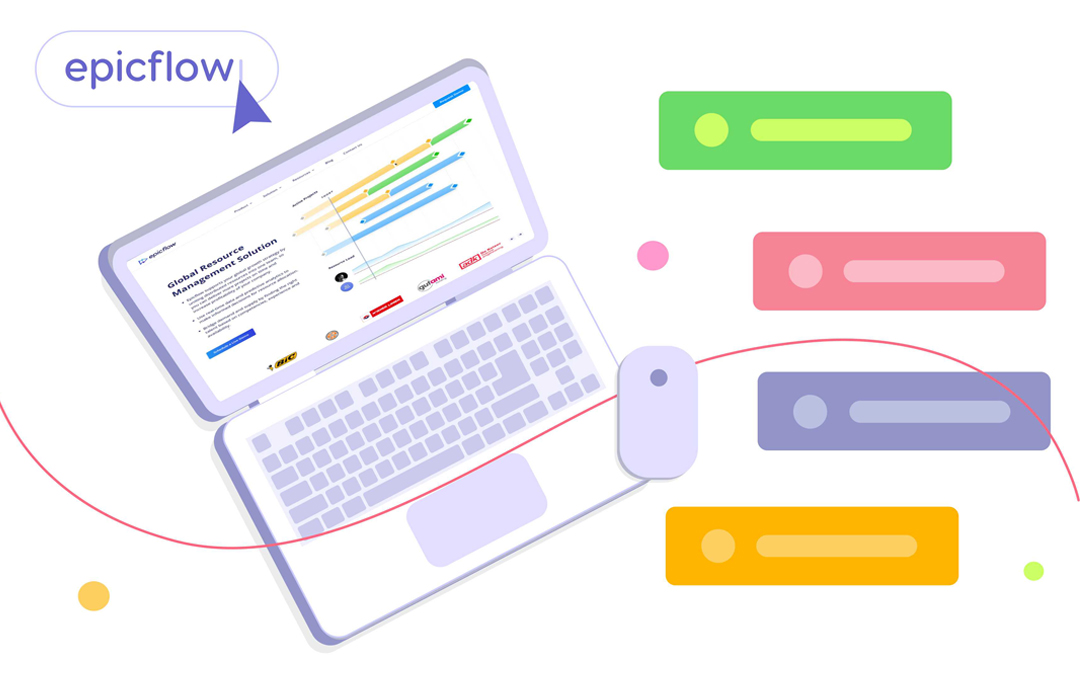However, determining the right priorities can be challenging in the constant flow of tasks and projects. In addition, overlapping deadlines, competing stakeholder requirements, or resource conflicts make prioritization in a multi-project environment a super-challenging task.
This guide aims to help you overcome the complexity of prioritization and determine priorities across multiple projects, leading them all to successful delivery.
Why Is Prioritization Important in Multi-Project Management?
In a nutshell, prioritization in a multi-project environment helps define the main focus of project work and contributes to the timely and successful execution of parallel projects. Here are the other reasons why prioritization is so important.
- It increases employee productivity.
The team members can focus on the most important assignments instead of switching from one task to another wasting their time and effort.
- It prevents team members from overload.
Without understanding what tasks should be completed first and foremost, they can easily become snowed under, which will negatively affect their efficiency and make them bottlenecks for the whole workflow.
- It facilitates flexibility.
Prioritization allows you to respond more effectively to any changes occurring in the workflow — whatever happens, you won’t lose focus of the most important things.
- It streamlines the project flow and improves project outcomes.
When the team members are productive and timely complete the most essential project work, it contributes to achieving desired project outcomes and timely project delivery, which is particularly essential in multi-project management.
However, setting priorities is often easier said than done: let’s examine the main challenges you may face when determining project and task priorities.
Possible Challenges in Determining Priorities Across Multiple Projects

Uncertainty
Uncertainty is a given in multi-project management; various events may affect the workflow but are impossible to predict accurately — equipment failure, employee illness, procurement delays, etc. This makes it difficult to set priorities correctly in a multi-project environment.
A large amount of data to analyze
Setting task priorities across several small projects probably won’t cause significant difficulties. But if there are hundreds of them, analyzing each project with all its tasks, taking all the dependencies and constraints into account, and setting the right priorities is next to impossible.
Office politics
Office politics still exists in a great number of organizations, and project-based organizations are no exception. For example, some managers engaged in office politics can determine a highest-priority project based on their interests and force a resource manager to assign resources to it. As a result, there will be no employees to staff a project that really matters for business or should be tackled first due to time constraints.
Competing priorities
Competing priorities refer to the situations in which various project tasks, goals, and requirements compete for limited resources (employees, budget, and time). In a multi-project environment with a shared resource pool, resource conflicts (when the same people are required for several projects and tasks) and overlapping deadlines cause the biggest prioritization challenges.
Prerequisites For Effective Prioritization
Thorough project planning
Start with defining the scope, objectives, deliverables, time frames, and, most essentially, resources required for each project. Thorough planning of every project in the environment will help you identify their needs, forecast potential issues, and set priorities correctly. At the same time, a project plan shouldn’t be too deterministic and should leave room for flexibility.
Planning resources and their capacity
Resource availability is the most essential constraint in a multi-project environment. Effective resource and capacity planning, which is performed before a project starts, is critical to preventing resource conflicts, delays, and unbudgeted expenses.
Smart resource allocation
When assigning people to projects or tasks, you should take into account their availability and capacity. This will not only help you prevent employees from overload and avoid bottlenecks but also minimize resource conflicts — you won’t be able to assign the same person to different tasks at the same time.
Flexibility
Priorities may change in the process of project work due to different factors: changing stakeholder requirements, customers’ needs, external factors, etc. So, in a multi-project environment, it’s critically important to be able to reprioritize — this will keep the whole multi-project mechanism working seamlessly and help achieve expected outcomes.
Regular monitoring of the whole project environment
Tracking project and resource performance should be an ongoing process aimed at the timely detection and prevention of bottlenecks or issues that can have a disruptive impact on the whole project environment. Also, it can indicate the need to reset priorities.
Relying on data
To make the prioritization process maximum effective, it should be based on accurate data, not assumptions. This means that you need visibility into all projects’ timelines with milestones and due dates as well as into the data on the availability and capacity of shared resources.
To be able to overcome prioritization challenges and set priorities across multiple projects with maximum efficiency, you need to combine your human intelligence with the assistance of a robust software solution. As the main focus in a multi-project environment should be on resources and their capability to perform the assigned scope of work, let’s consider how a resource management tool can help you with prioritization.
Tackling Priorities with a Resource Management Solution: Epicflow Example

Epicflow is a resource management tool designed specifically to address the needs of a multi-project environment with a shared resource pool. It considers all the dependencies between projects and constraints as well as resource availability and capacity to facilitate the timely and successful delivery of every project in the environment.
This is how Epicflow deals with priorities.
Automatic prioritization
Epicflow prioritizes tasks across the whole project environment depending on the remaining time buffer. It provides every team member with a personal to-do list with tasks ordered by priorities. As any changes occur in the workflow, Epicflow recalculates the priorities automatically in real time. As a result, every employee puts their effort into the most important part of the project work, avoiding bad multitasking and overload.
Recalculating priorities
Epicflow facilitates flexibility, so, when you add a new project to the environment (or any other changes occur), it recalculates the priorities automatically. So, you shouldn’t analyze project and resource-related data along with project dependencies and constraints to change priorities — Epicflow will do that for you as soon as you enter the new data into the system.
Visibility into the project and resource-related data
Epicflow provides an overview of the whole multi-project environment with all milestones and due dates. Projects that require immediate management attention are marked with colors, so, if any issues occur, you’ll never lose sight of them. What is more, Epicflow keeps relevant data on resource availability and capacity, which helps assign resources to tasks and avoid overallocation and resource conflicts.
AI virtual assistant
Epicflow’s virtual assistant Epica helps team members determine their priorities — they can just ask the assistant, and it will prompt them what task they should start working on according to their personal task list.
Making data-driven decisions
If you need to make changes to the project environment, you can test their impact with Epicflow’s scenario analysis. This will help you reduce uncertainty and make the most reasonable management decisions.
Therefore, with Epicflow, you always have clear and correct priorities backed with data, which contributes to maximum efficient work on multiple concurrent projects.
Ready to set the right priorities with Epicflow? Contact us to learn more about our unique approach to prioritization and effective management of multiple projects and their shared resources.
Conclusions
- Prioritization is the key to determining the main focus of project work and ensuring the successful delivery of parallel projects.
- Determining priorities in a multi-project environment is a challenging process. It’s explained by uncertainty, a huge amount of data to analyze, competing priorities, and sometimes office politics.
- Effective prioritization depends on a number of factors: proper planning of projects and resources, visibility into and accessibility of relevant data, intelligent resource allocation, and room for flexibility.
- Leveraging a software solution with prioritization capabilities like Epicflow will help you prioritize work across multiple projects most effectively and achieve expected project results faster and without extra effort.

